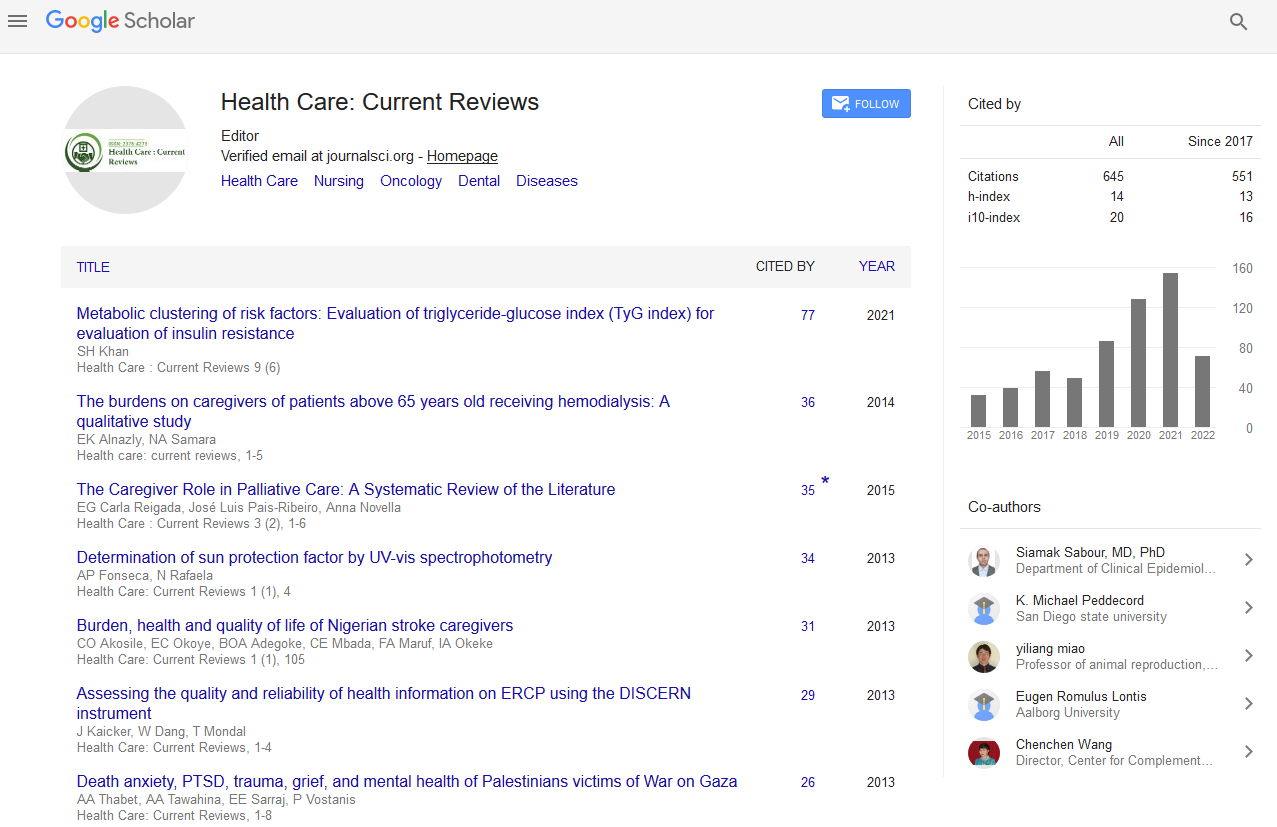PMC/PubMed Indexed Articles
Indexed In
- Open J Gate
- Academic Keys
- RefSeek
- Hamdard University
- EBSCO A-Z
- Publons
- Geneva Foundation for Medical Education and Research
- Google Scholar
Useful Links
Share This Page
Journal Flyer

Open Access Journals
- Agri and Aquaculture
- Biochemistry
- Bioinformatics & Systems Biology
- Business & Management
- Chemistry
- Clinical Sciences
- Engineering
- Food & Nutrition
- General Science
- Genetics & Molecular Biology
- Immunology & Microbiology
- Medical Sciences
- Neuroscience & Psychology
- Nursing & Health Care
- Pharmaceutical Sciences
Abstract
Challenges and Progress of Policies on Cervical Cancer in South Africa
Jordaan S, Michelow P, Simoens C and Bogers J
Cervical cancer is the second most common cancer in South African women but the most frequently encountered cancer in black women. In 2000, the South African Department of Health launched a national cervical screening program. However, this has not been fully implemented because of the chronic shortage of health care workers and a lack of essential medical equipment. In addition, there is also a high burden of infectious diseases in this country. South Africa has the largest expanding HIV burden in the world and it is estimated that 6.3 million people in South Africa were living with HIV in 2013, representing 18% of all people living with HIV worldwide. The high prevalence of HIV complicates the situation as HIV-infected women have greater rates of pre-invasive and invasive cervical cancer rates. In April 2011 the South African government launched the HIV Counseling and Testing (HCT) campaign, a new national drive to encourage people to know their HIV status and access counseling and treatment, including cervical screening. A universal test and treat (UTT) strategy was adopted in September 2016 after research showed that this type of program will reduce the chance of HIV transmission. The South African National Department of Health will soon announce and implement a new cervical cancer control policy. Over the past few years, the South African Department of Health has introduced several new policies regarding HIV testing and care, and plans to introduce a new cervical screening policy shortly. This overview discusses the progress as well as challenges the South African department of health has with the various programs.


